Dogs can either have a single or double coat. The double coat consists of two layers: the undercoat, which is dense, fast-growing, and features short hairs, and the topcoat with long hairs, also known as guard hairs that grow relatively slowly. Ideally, double-coated dogs are fluffier than single-coated dogs and shed more often or seasonally.
There are over 40 dog breeds with double coats Most of these pooches are majorly from the spitz family, including Akita, Shiba Inu, Chow Chow, Alaskan Malamute, Norwegian Elkhound, Samoyed, Pomeranian, among other spitz dogs.
Learn more about these dogs with double coats, plus their characteristics and grooming tips.
Akita
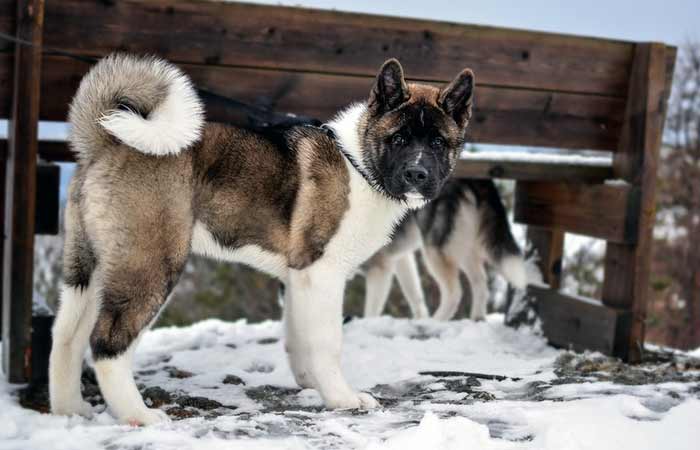
Akita Inu is a Japanese dog breed from the mountainous region of Northern Japan. It’s very affectionate, powerful, dominant, and strong-willed. The dog has a short double coat with either short or long guard hair. Its luxurious double layer is soft to the touch, dense, and requires regular grooming.
The Japanese Akita sheds its fur seasonally (at least twice a year), something called blowing. Blowing is where they lose a considerable chunk of hair at once and if you don’t shed or trim this hair, expect vast clumps of fur dropping anywhere for about two months.
Alaskan Malamute
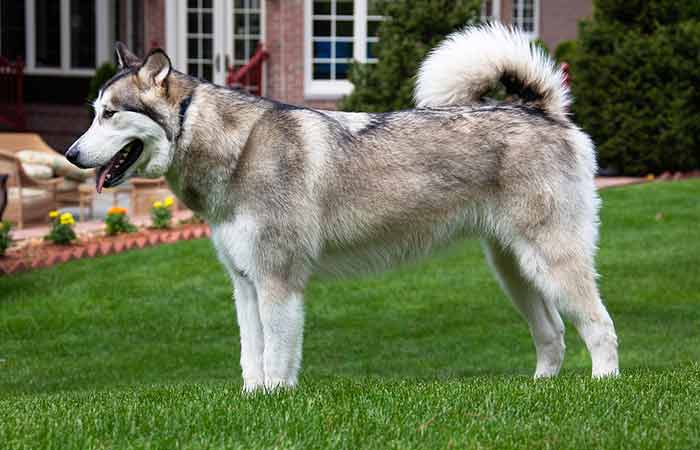
The Alaskan Malamute also belongs to the northern spitz family and resembles the huskies. It has a thick double coat with a coarse topcoat that shouldn’t belong nor soft. Its undercoat is oily with a wooly texture to repel cold and moisture, hence waterproof. The undercoat should be about two inches thick.
Unfortunately, their dense coat requires regular grooming, ideally with a rake brush to ensure healthy skin and a beautiful coat. The dog sheds all year round, but precisely during the spring and autumn seasons.
Australian Shepherd
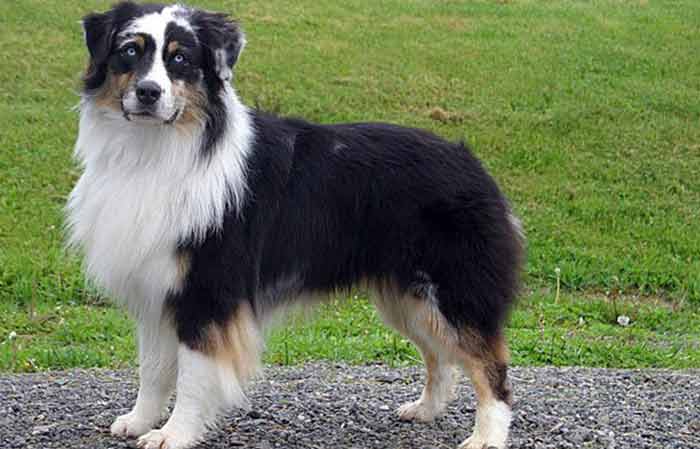
The Aussie also features two layers of hair, with the inner layer majorly suited for insulation while the outer layer is weatherproof. Its thick double coat also helps to bar them from getting scratches from sticks and burrs.
The Australian Shepherds topcoat can vary from short to long and wavy and sheds all year round. You’ll also notice that the coat on the face is thicker and shorter than the rest of its body.
Chinook
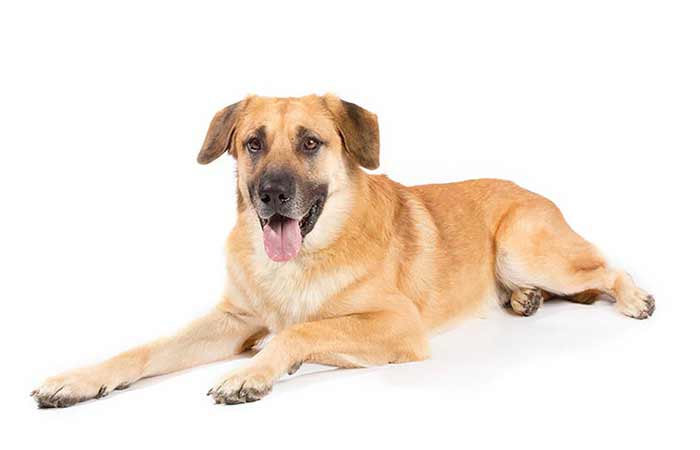
The Chinook is a medium-weight dog weighing approximately 70 pounds and has a height of 21 to 27 inches. They have a double coat in shades tawny, silver, black, and fawn. Their plush double coat features a thick, downy, and soft undercoat with a short to medium-length coarse topcoat.
As for shedding, they occasionally shed all year round, but their coat is relatively easy to care for compared to other spitz dogs.
German Spitz
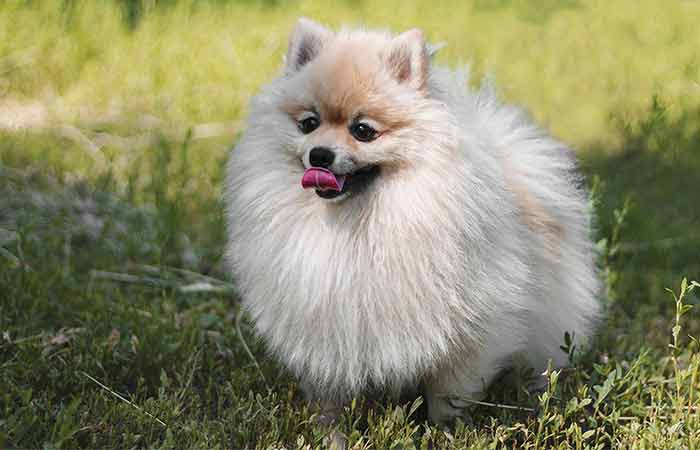
The German Spitz features five varieties, including the Keeshond, all belonging to the spitz family breed. They have a profuse double coat that sheds twice a year, dropping in about two to three weeks, but the shedding is relatively minimal.
The undercoat features short, wooly, and soft hairs with a long and fibrous coat over them. Because their fur is rather generous, you need to groom them regularly to keep the shedding to a minimum.
Havanese
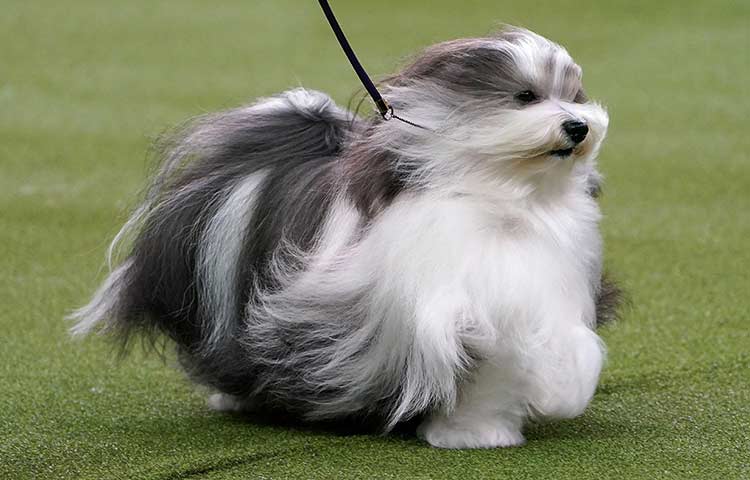
The Havanese have a double coat from their experience living in the tropics of Cuba. Their undercoat is soft and dense, and their topcoat is long, silky, smooth, and lightweight. Generally, the Havanese coat is profuse, slightly wavy, undulating, and thick enough to offer insulation and protection from heat and cold.
Unlike other double-coated dogs, the Havanese can have an absent undercoat, plus their coat is cool to touch and has an unrefined silk texture. Although, some Havanese have a soft undercoat that appears almost oily. Lastly, their double coat is hypoallergenic.
Keeshond
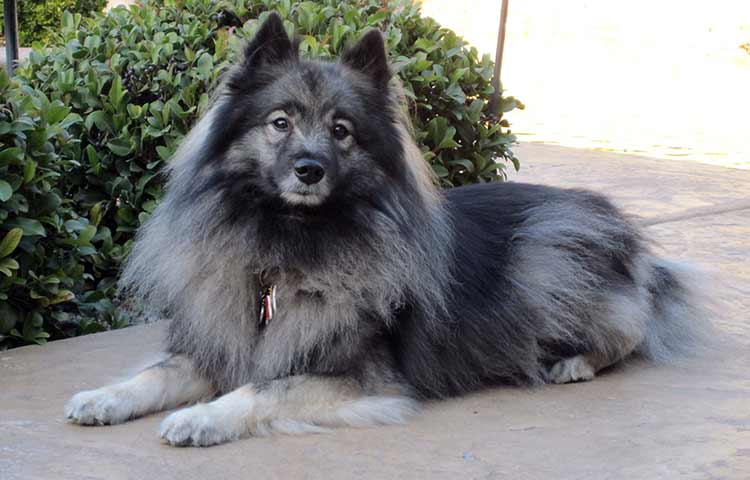
The Keeshond has a thick double coat that’s notably thicker around the neck. Their undercoat is soft, refined, and wooly with a plush, harsh, and long guard coat, similar to the Samoyed.
Because of their lion-like ruff hair, neck, and shoulder, plus long hair all over, the well-tempered dog requires regular grooming and de-shedding.
Newfoundland
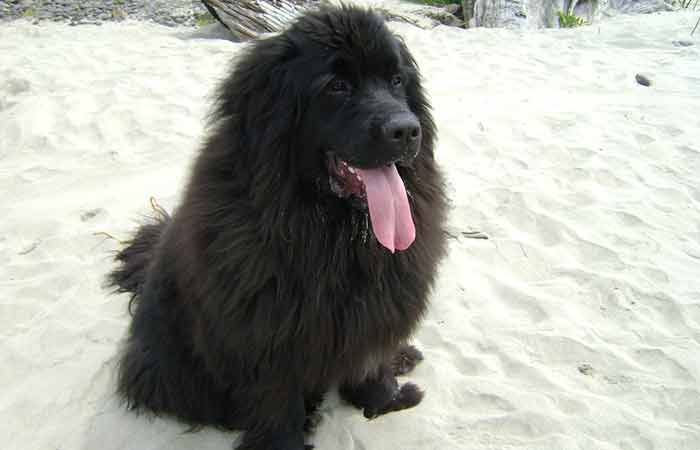
The Newfoundland has a thick waterproof double coat with a soft and dense undercoat and a long, coarse topcoat. Their thick coat does require regular de-shedding and brushing to prevent matting and keep them looking beautiful and healthy.
Besides their undeniable great double coat, the Newfoundland is excellent at life-saving and water rescue because of their flat, water-resistant coat, muscular build, webbed paws, and swimming tactics.
Norwegian Elkhound
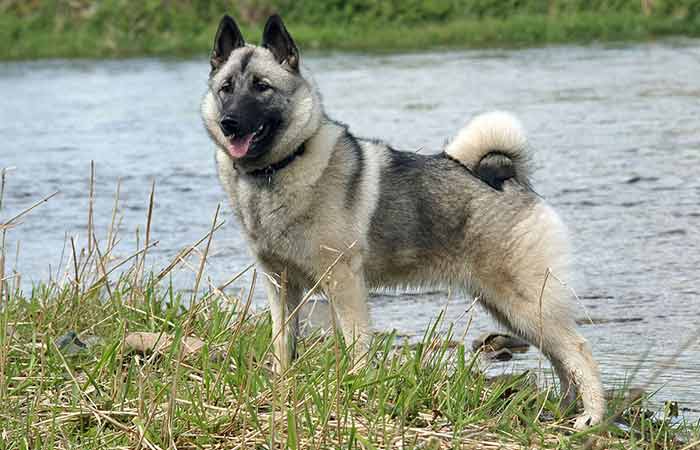
The Norwegian Elkhound has an adorable double coat that’s weather-resistant and sheds moderately throughout the year. However, they can also shed highly during the spring and fall, which lasts for some months. The Elkhounds coat blowing is similar to that of larger heavy shedders like the Chow Chow and the Samoyed that molt a lot throughout the year.
The Norwegian Elkhound has a dense undercoat and a coarse topcoat with guard hairs that need regular grooming, de-shedding, and trimming. Also, note that their coats can have different hues depending on their age.
Pomeranian
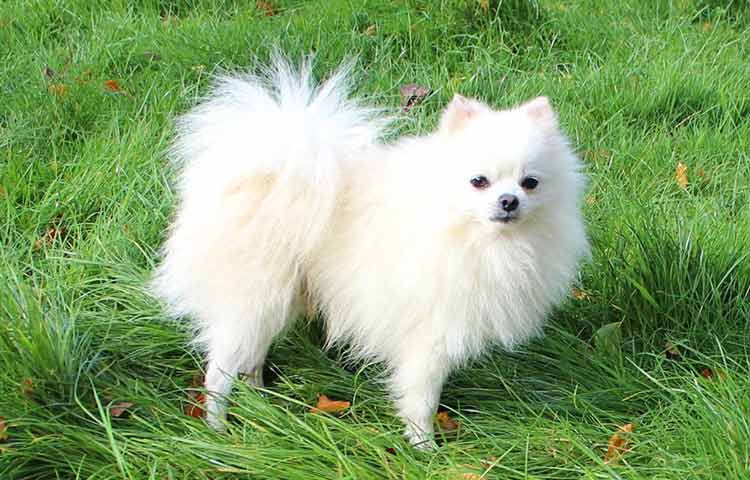
The Pomeranian has double layer coats with long and dense guard hairs sitting over a soft, short, and fluffy undercoat. Their double coat is primarily for insulation, like staying cool in the summer and warm in the winter.
Unfortunately, the Pomeranian’s ruff hair needs regular brushing because their undercoat sheds a lot, precisely after every hair cycle. Without brushing, it will lead to a lot of matting.
Saint Bernard
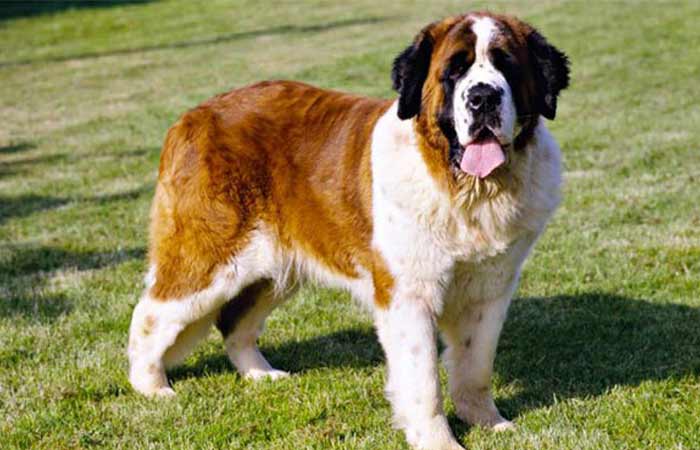
Saint Bernard is bred in colder climates, so it would make sense for them to have double coats. They have a short undercoat that’s very smooth and dense with two variants of guard hairs. You can find either a short-haired or long-haired Saint Bernard, both soft and glossy and particularly bushy around the thighs.
The Bernards need regular brushing, like weekly, to keep off the dirt and extra hairs from their coat. But the main reason will have to be keeping the fur shiny and beautiful.
Samoyed
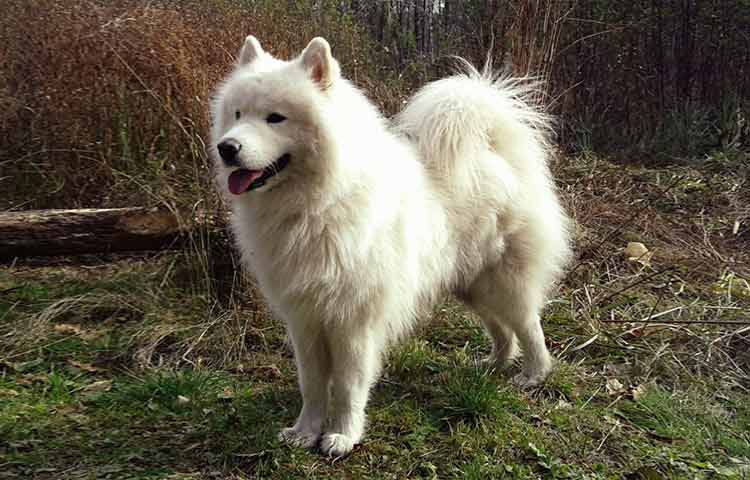
The Samoyed has a profuse double coat with a short, fine, soft, and wooly undercoat for insulation. Their topcoat features medium to long guard hairs harsh, coarse, and sheds a little less than their undercoat. This medium-sized herding dog throughout the year but mostly seasonally after every two seasons.
Daily brushing using a slicker brush would be great to get the dirt and extra hairs off the dog.
Shiba Inu
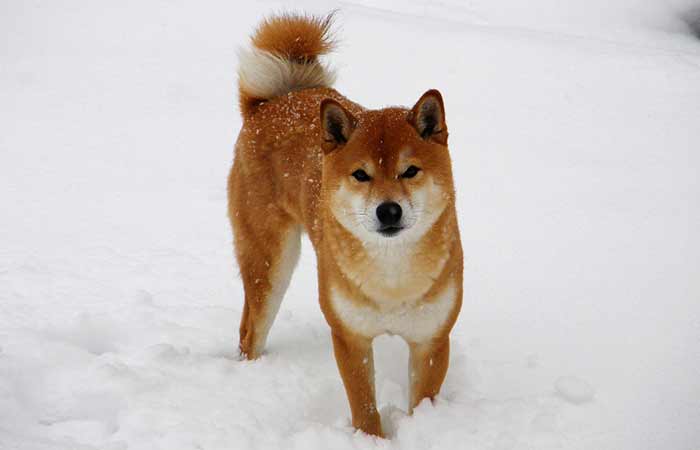
The Shiba Inu resembles a teddy bear with a stiff and straight outer coat laying over a soft and thick undercoat. They’re moderate shedders but can shed heavily; their blowing seasons are fall and spring.
Their topcoat features an appealing medium-length coat that offers protection from injury, pests, cold, and heat. Their undercoat is dense, smooth, and luxurious to the touch, acts as an insulator, and helps the dog regulate its body temperature.
Tibetan Mastiff
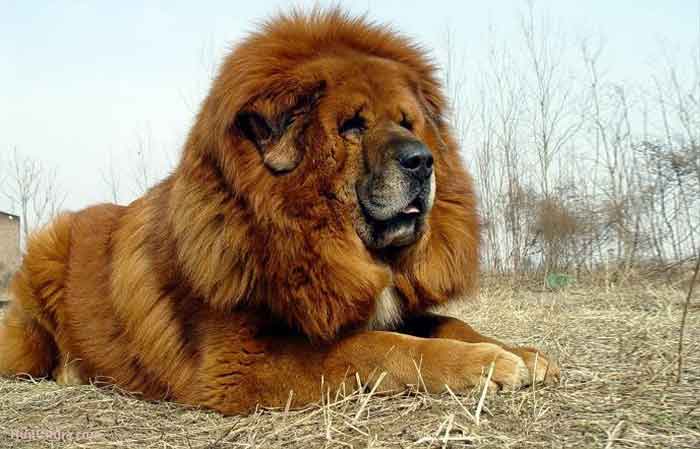
Last but not least, the Tibetan Mastiff has a two-layer coat featuring a thick wooly undercoat and a long, equally thick coarse-textured topcoat. Their coarse guard hairs are straight and stiff, never curly, wavy, soft, or silky, and their undercoat hairs are often thinner in warm weather.
The Mastiffs coat is relatively low maintenance that requires very little grooming, but their undercoat sheds massively over a year. The dog’s blowing seasons are in late spring and summer.
Other dog breeds with double coats include:
- Alaskan Husky
- American Eskimo
- Australian Shepherd
- Bearded Collie
- Bernese Mountain Dog
- Chow Chow
- Finnish Lapphund
- Finnish Spitz
- German Shepherd Dog
- Golden Retriever
- The Great Pyrenees
- Icelandic SheepDog
- Korean Jindo
- Labrador Retriever
- Leonberger
- Miniature Schnauzer
- Norwegian Lundehund
- Old English Sheepdog
- Pyrenean Mountain Dog
- Rough Collie
- Shetland Sheepdog
- Siberian Husky
- Swedish Lapphund
How to Tell If a Dog has a Double Coat
Ideally, dogs with thick and fluffy fur have double coats, but here are tells:
Fluffy Topcoat
Double-coated dogs have dense guard hairs that appear like wool fur all over the dog. Regardless of whether the topcoat is short, medium, long, curly, or wavy, its appearance is much fluffier than single-coated dogs.
Two Distinct Coats
When you look through the dog’s hair, you should notice two distinct types of hair. The undercoat often appears short, soft, dense, and about one or two inches deep. Some may seem oily or silky. The guard hairs will ideally be contrary to that, in that the texture may be hard/ coarse, longer than the undercoat, and luxurious in density.
As you’ve read above, these double-coated dogs need the undercoat for insulation and the topcoat for protection. So if your dog has both the undercoat and guard hairs, then it’s double-coated.
Kind of Shedding
Most double-coated dogs shed all year round, but there’s the distinction that they must shed twice a year depending on the season. They must release their outer guard hairs after a while to allow for new guard hairs to grow. Their secondary shedding may occur in late spring to help cope with summer heat or the fall season.
Again, their shedding design is different. Unless the double-coated dog is hypoallergenic like the Havanese, their hairs will shed more like molting than individual straight hairs dropping.
As you have read from the above descriptions, their shedding is also more intense, like huge chunks of hair at once over two to three weeks up to a month or two.
Origin or Type of Breed
From the above section of double-coated dogs, you’ll note that the spitz family of over 40 dogs is double coated. These spitz dogs are mostly from colder climates where they need the extra layer of fur, plus they’re from a herding breed like the Akita and Shiba Inu or are retrievers and terrier types of dogs.
Double Coated Dog Grooming Tips & Ideas
The first tip is don’t shave your double-coated dog. Not only does shaving create possible skin issues like irritated skin patches from scratching or licking, razor burns, and hot spots, shaving also doesn’t affect their rate of shedding, so it’s pointless. Double-coated dogs shed seasonally, twice a year; the rest of the moderate shedding is regular and dependent on their hair growth cycle. Hence, shaving will not deter their growth rate, just a temporary solution to their shedding features.
Additionally, shaving can affect the predictability of shedding. The coat may shed aggressively all year round or takes the topcoat two years to fully grow back, with severe cases leading to alopecia. We don’t have to tell you how your dog will suffer without its guard hairs.
Lastly, shaving can cause the dog to get skin cancer or be susceptible to sunburns. Shaving the dog a little, especially around the belly, can be a great move to offer the dog maximum cooling abilities from the summer heat, but leaving the section shaved will have adverse repercussions to the dog’s insulation and air conditioning, altering their metabolism.
Other tips and ideas for your double-coated dog include:
- Brush your dog regularly or at Lear two to three times a week to prevent matting and tangling.
- Use the right brush to brush both coats while removing dirt and loose hairs gently; this will help keep their coat looking lush and beautiful. For example, an undercoat rake is best for the undercoat and a wire brush or a pin combo for the guard hairs.
- If your dog has particularly thick hair in certain regions like the butt, chest, or thighs, use a slicker brush to even the topcoat.
- Bathing should be minimal as long as you maintain regular brushing of both coats to remove dirt and hairs.
Double Coat Dog Brush
There are several brushing tools you can use, but we shall focus on four types. The best brushes for double-coat dogs include:
- The slicker
- Wire or pin brush
- Bristle brush
- Deshedding tools like the furminator or the undercoat rake
Slicker Brush
The slicker brush is an ideal choice for removing excess hair, dirt, and debris from your dog’s fur. The brush features short fine-toothed bristles aligned on a flat surface to help navigate through the guard hairs. They work well with double-coated dogs because they can penetrate the dense topcoat to remove dirt and molted hair. It can also separate the hairs to remove any loose hairs from the undercoat, leaving the fur clean and smooth.
Wire Brush
The wire brush has bristles made from wire, often steel, but it’s more like a pin comb/brush for dogs. It’s relatively safe for the topcoat and different lengths of hair. Their wire prongs penetrate through the dog’s coat to help detangle any strands. The pin brush can have plastic, rubber, or silicone tips to ensure more comfort for the dog and support brushing for long-haired dogs like the Havanese.
Pin brushes are prevalent in use but often least helpful. The best way to use the pin brush is in the also step as you fluff up the coat. They can also pick up loose hairs from furniture an
Bristle Brush
Bristle brushes are best for short topcoats and may not be as efficient with double-coated dogs. Their work is to separate hair follicles to enhance blood flow and remove dead hair and skin cells. They’re best for the last step to ensure an oily look to the coat.
Undercoat Rakes and Deshedding Tools
The most effective brushes for double-coat dogs have to be the undercoat rakes. Rakes can penetrate a dog’s thick coat and untangle hairs, but to get to the undercoat, you need the undercoat rake. They’re like a shaving razor with one or two rows of tightly-spaced pins, which exert some pressure on the hair to de-shed them. They’re great for fluffy, dense undercoats like that of the Chow Chow and Alaskan Malamute because they can remove all the dead hairs and matting from the fur.
The undercoat rake is available in multiple tooth widths, so it’s suitable for various breeds. The great thing about the undercoat rake is that it can work on the top and undercoat, plus wet and dry coats.
To use the tool, pull the rake in the direction of the coat growth, working downward with a narrow-toothed rake. The more you brush, the less hair you will shed. Maintain a consistent pressure to ensure you don’t shave the topcoat and be careful around delicate skin such as the ear junctions, hock area, or armpits.
The de-shedding tool is also great as you can expect to reduce dog shedding by 90% just by brushing the topcoat.
More on Dog Fur






